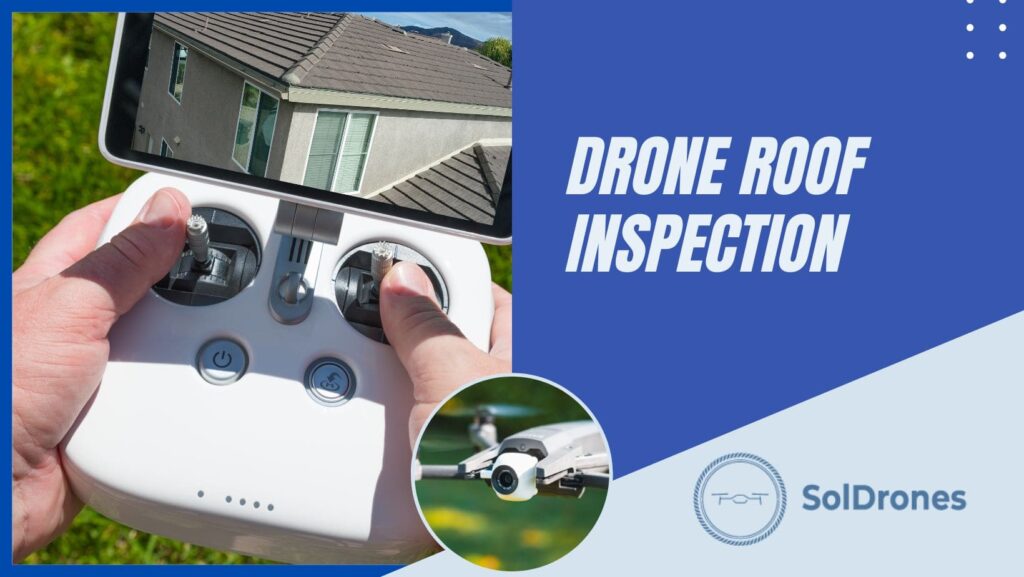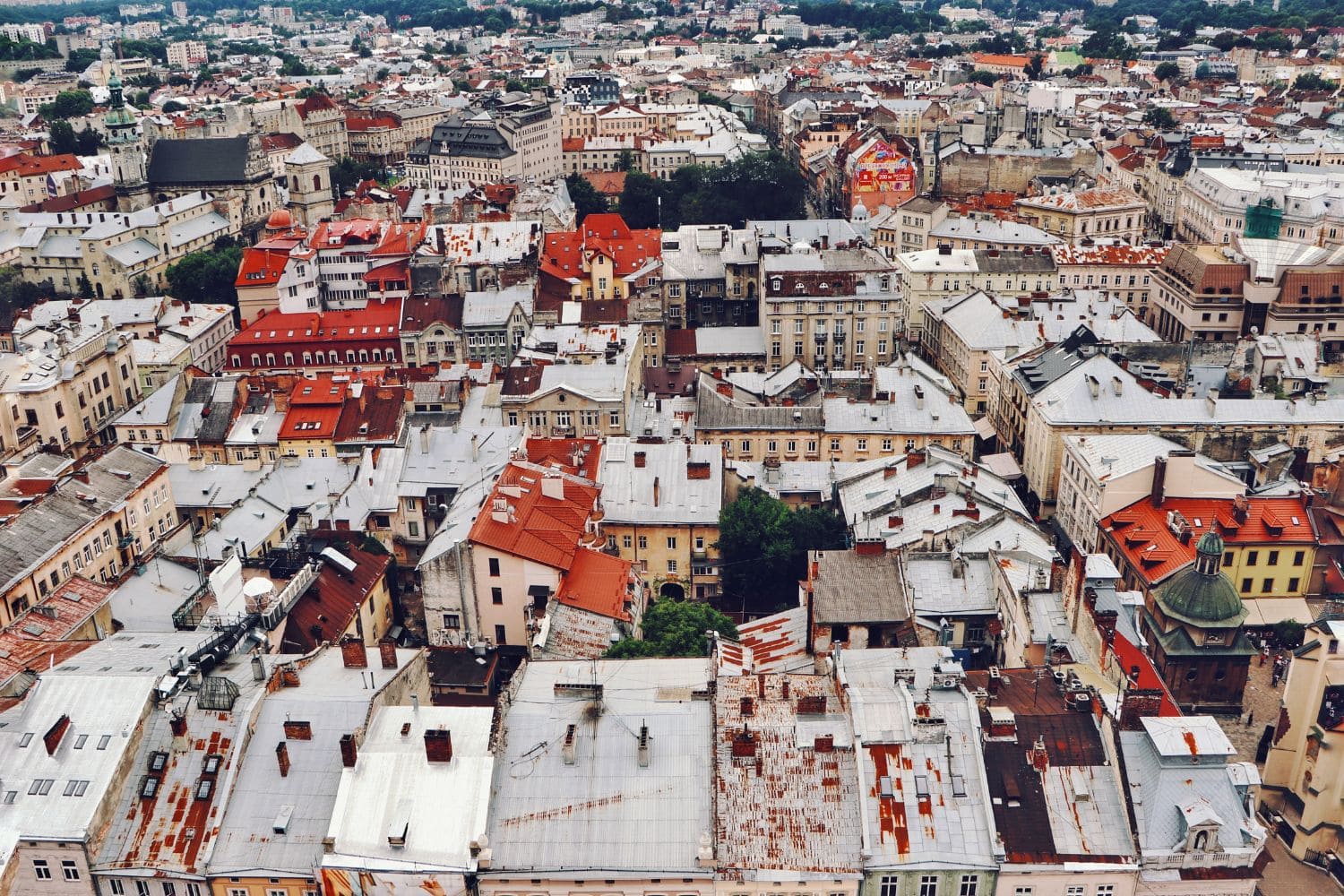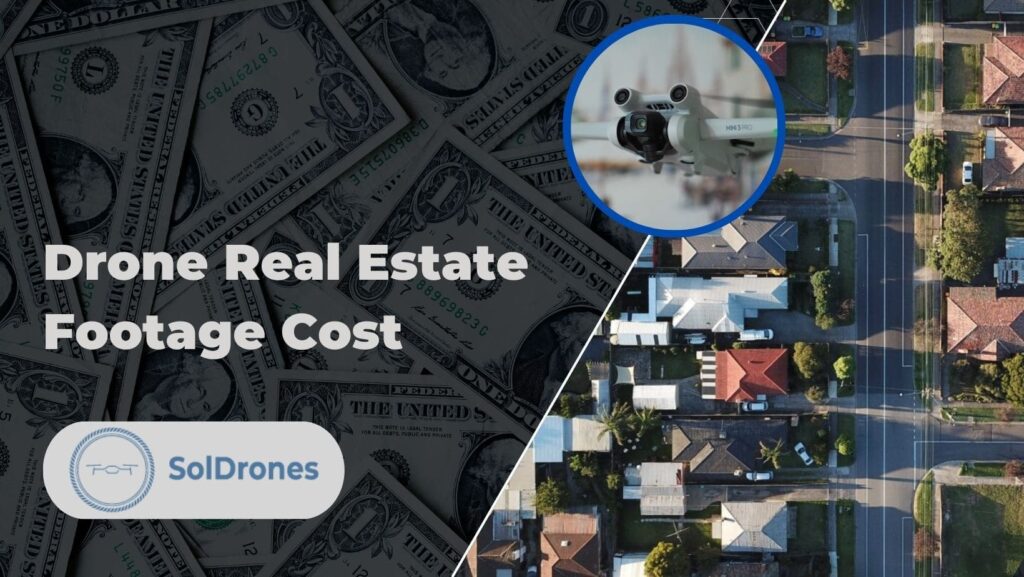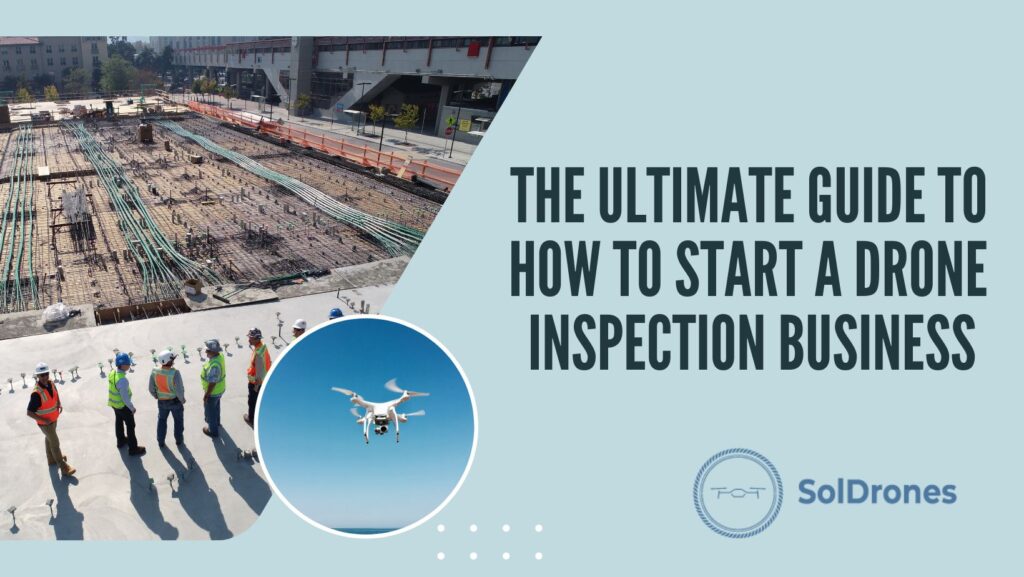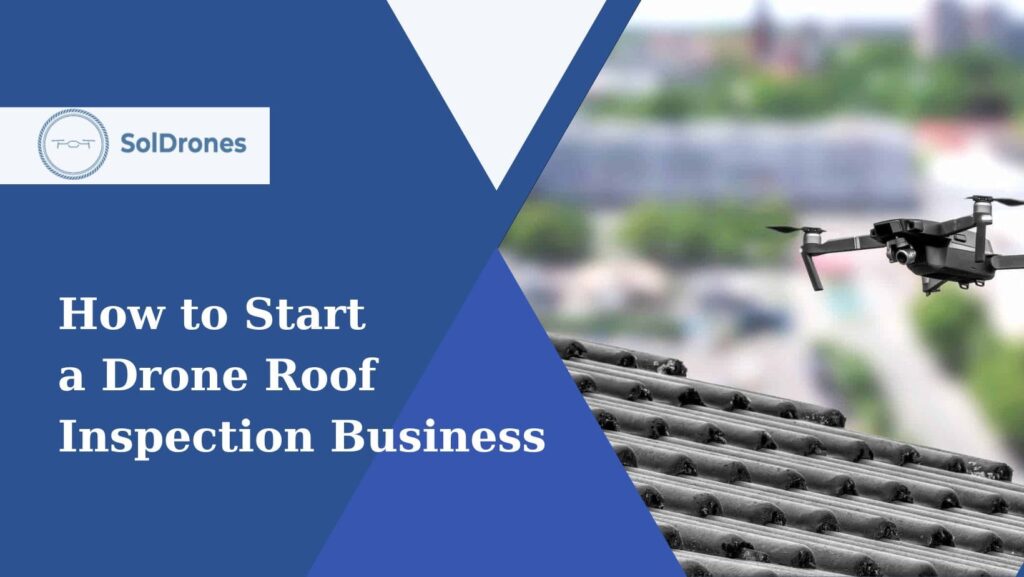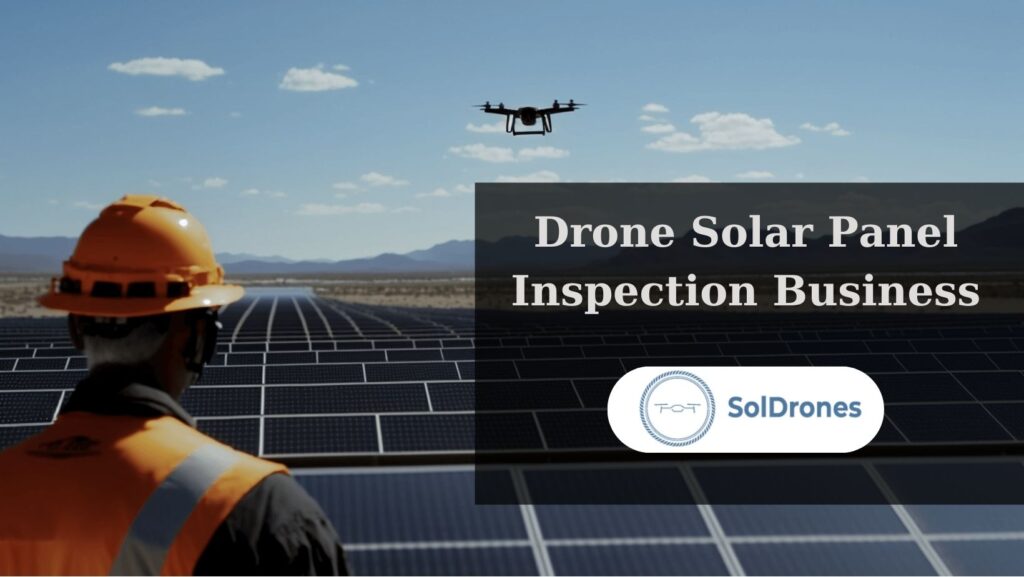If you’re thinking about using a drone to inspect your roof, you’re not alone. Leaks, gutters, and normal wear and tear might be the cause, or maybe you’re inspecting your roof for insurance purposes.
The roof is like the crown of a home; it protects everything underneath it.
Yet, as essential as it is, climbing up for a check often comes with inherent risks and complications.
The answer to your question, “Can I use a drone to inspect my roof?” is a resounding yes.
Drones make the roof inspections less dangerous and offer precise results that are hard to match through manual labor. Whether you’re a homeowner, a DIY enthusiast, or a roofing professional, drones are carving out a new reality in roof inspections.
In this article, you’ll discover the ins and outs of drone roof inspections, including costs and the best drones to do the job.
Article Highlights:
- Drones revolutionize roof inspections, providing faster, safer, and often more economical solutions than traditional methods, suitable for homeowners and professionals alike.
- The drone market offers options for all budgets, from high-end models like DJI Phantom 4 RTK to budget-friendly choices, each serving unique inspection needs.
- Insurance companies are leveraging drone technology for property assessments and claims, noting substantial improvements in speed, safety, and cost-effectiveness.
Why Choose a Drone for Roof Inspection?
Video Credit: iRoofing
When the clock is ticking and every minute costs you, drones come as a savior in the world of roof inspection.
According to industry statistics, drones can cut the time of inspection by up to 50-75%, depending on the complexity and size of the roof.
Time is money, as they say, and in this case, drones help you save both.
Drones are revolutionizing how we approach roof inspections, offering a safer, quicker, and often less expensive alternative.
But let’s not overlook one of the most significant benefits: safety.
Traditional roof inspection methods often involve climbing ladders and walking on rooftops, which comes with its share of hazards. In the United States alone, falls account for about one-third of all construction-related fatalities annually. Drones eradicate almost all of these risks, keeping your feet safely on the ground while the drone does the high-wire act.
Then there’s the matter of your wallet. Initially, you might balk at the drone roof inspection cost, but consider it an investment. The cost you bear upfront often pays off in the long run. Think about it: fewer man-hours mean fewer wages to pay, not to mention reduced liability and insurance costs. Plus, the quick turnaround time could enable faster transactions for professionals in the real estate or construction sectors. It’s simple math, really—less time and fewer risks often equal more savings.
Lastly, don’t underestimate the sheer quality of the data you can gather. Drones with advanced imaging technology can capture high-resolution photos and even 4K videos of your roof.
Some drones offer thermal imaging to identify hidden issues like water damage or heat loss spots. The level of detail is often far superior to what even the most experienced human eye can see. You’re not just getting a visual check; you’re getting a thorough, data-driven examination of your roof’s health. In the information age, drones are your best ally in maintaining the shield that protects your home or business.
Can I Use a Drone to Inspect My Roof?
So, you’re convinced drones are a game-changer for roof inspections, but now you’re wondering, “Can I use a drone to inspect my roof?” The answer isn’t a simple yes or no. The Federal Aviation Administration (FAA) lays down the law for drone operations in the United States.
If you’re going DIY, you’ll need to abide by FAA’s Part 107 rules, which include passing a knowledge test and obtaining a Remote Pilot Certificate. Flying under the FAA’s recreational guidelines may suffice for casual, non-commercial use, but local zoning laws and airspace restrictions still apply.
However, the DIY route isn’t for everyone. While it may seem like a cost-saving option, there’s a steep learning curve. You’ll need to master drone piloting and understand how to interpret the images and data collected.
Any errors could result in a faulty inspection and costly mistakes. Conversely, professional services bring expertise and quality equipment, often delivering more accurate results. Sure, you’ll pay more upfront, but you’re also buying peace of mind through inspection.
Drone Roof Inspection Costs
Let’s talk numbers; after all, the cost is often the final frontier in decision-making. Professional drone roof inspection services are costly, but consider it an investment. Prices can vary based on location, inspection scope, and drone quality, but you’re generally looking at a range between $200 to $600 for a residential property. Larger commercial spaces can run into the thousands. These figures usually include high-definition imagery, data analysis, and a detailed inspection report.
If you’re leaning toward a DIY approach, the costs come in a different package. A decent drone with the necessary camera specifications will set you back anywhere from $600 to $2,000. And that’s just the tip of the iceberg.
Factor in additional equipment like extra batteries, protective gear, and specialized software for image analysis, and the bill can run high. It’s worth noting that cutting corners on equipment compromises the quality and reliability of your inspection. While DIY may seem less expensive initially, the long-term costs of time, learning, and risk could tip the scales.
Best Drones to Inspect Your Roof
The type of drone you choose for your roof inspection is as important as the decision to use a drone in the first place. You wouldn’t use a telescope to read a book, just as you wouldn’t use a magnifying glass to study the stars.
The same principle applies here. Depending on your needs and budget, different drones offer varying levels of capability and quality. This section will guide you through the best options at each price point.
A. Professional Drones
When the sky’s the limit for your budget and quality is non-negotiable, high-end drones like the DJI Phantom 4 RTK are the go-to choices. Designed with precision and reliability in mind, these drones offer advanced obstacle sensing, top-of-the-line camera resolution, and RTK (Real-Time Kinematic) for pinpoint accuracy. These features don’t just give you an inspection but an in-depth analysis.
B. Mid-Range Drones
Let’s say you’re a savvy consumer—someone who wants a good blend of affordability and performance. Drones like the DJI Mavic Air 2 could be your match made in aerial heaven. With 48MP photos and 4K video capabilities, these drones make no compromises on quality while costing significantly less than their high-end counterparts. They are the jack-of-all-trades in the drone world, offering a balance that appeals to professionals and hobbyists alike.
C. Cheap Drones for Roof Inspection
If budget is a pressing concern, it’s tempting to seek out the most economical choices. There are drones under $300 that can, technically, do the job. However, a word to the wise: these budget-friendly options often lack advanced stabilization and high-quality imaging features. While they can give you a glimpse of your roof’s condition, they might not reveal the nuanced details that could be crucial for a comprehensive inspection. Like a bargain-bin telescope, they’ll show you the moon but not the craters.
In essence, the right drone for your roof inspection is out there; it’s merely a matter of identifying your priorities. Whether operating with a top-tier budget or in the market for something more pocket-friendly, there’s a drone suited to your needs. Like choosing a trusted carpenter or an efficient home appliance, making an informed decision can provide long-term benefits. Trust the tech, and it will work for you.
How to Use a Drone to Inspect Your Home’s Roof
Navigating the skies with your drone for a roof inspection may seem futuristic. Still, the process requires careful planning, execution, and analysis. Here’s how you can ace each phase:
Planning
Before you bring your drone to life with the flick of a switch, meticulous planning lays the groundwork for a successful mission. Whether scrutinizing the day’s weather forecast or updating your drone’s firmware, this prep work is crucial. A checklist can serve as your co-pilot, ensuring you don’t overlook any critical elements.
Flying the Drone
Once you’ve crossed your t’s and dotted your i’s in the planning phase, it’s time to take flight. Outline your flight path by setting geo-fences through your drone’s software, creating a virtual arena for your inspection. Then, with your drone soaring above, capture images. Striking a balance between altitude and detail is essential; you don’t want to sacrifice image quality for safety or vice versa.
Analyzing Data
After your drone has descended to terra firma, you’re faced with a trove of visual data. This is when you sift through the digital sediment for nuggets of insights. Software tools are your sifters here—some with the sophistication of artificial intelligence to pinpoint problem areas, others that offer a more straightforward, manual interface. The tool you pick will hinge on your level of expertise and what you’re looking to extract from the data.
In summary, drone roof inspections are a symphony in three parts—planning, flying, and analyzing. Each requires attention to detail and a specific skill set, blending seamlessly to create a comprehensive and efficient process. It’s not just about flying; it’s about flying with a purpose and understanding how to extract actionable insights from your aerial reconnaissance.
Inspection Drones in the Insurance Sector
The drone revolution is not confined to DIY enthusiasts or professional inspection services; it’s also making waves in the insurance sector. Insurance companies are rapidly adopting drone technology for property assessments and claims operations. Why? Simply put, it’s faster, safer, and more cost-effective than traditional methods.
Case studies provide a concrete snapshot of this transformation. For instance, one major insurance company reported a 30% reduction in the time needed to settle claims after adopting drones. Another case study highlighted that drones reduced the human error factor substantially, resulting in more accurate payouts. This is akin to a seismic shift in the insurance landscape, and it’s only the beginning.
Final Thoughts
In summary, drones are revolutionizing the field of roof inspections for both homeowners and professionals. Their advantages are manifold, offering unparalleled speed and efficiency while enhancing safety. This makes drones a game-changing technology for roof assessments.
On the financial side, the long-term cost savings are compelling, opening the door for both professional services and DIY enthusiasts. Legal considerations are undoubtedly present, but these hurdles are increasingly manageable as FAA regulations evolve.
The market offers many drone options tailored to specific needs, whether you’re looking for high-end, mid-range, or budget-friendly choices. We’ve also provided a step-by-step guide on planning and executing a drone inspection and software suggestions for data analysis.
And let’s not overlook the substantial impact of drones in the insurance sector. By accelerating claims and reducing costs, drones are a valuable asset. Whether you’re an individual homeowner or a business entity, drones present an efficient, safe, and cost-effective alternative that merits serious consideration.
FAQs
Can I use a drone to inspect my roof?
Yes, you can use a drone to inspect your roof, but you’ll need to be aware of FAA regulations and acquire the necessary permits. If you’re not an experienced drone pilot, you may also want to consider hiring a professional service.
What is the average cost of a drone roof inspection?
The cost can vary greatly depending on the complexity of the roof and the type of drone used. Professional services often start at around $300 but can go much higher for extensive commercial properties. DIY costs will involve the purchase of a drone suitable for roof inspection, which can range from $200 to $2,000, along with any additional equipment and software.
What are the best drones to use for roof inspection?
For professional quality, drones like the DJI Phantom 4 RTK are often recommended. For semi-professional or amateur use, the DJI Mavic Air 2 offers a great balance of features and cost. There are also budget-friendly options, but these may come with limitations such as lower-quality imaging.
How do I actually use a drone to inspect my home’s roof?
Before you start, make sure you have all necessary permits and are aware of any legal restrictions. Plan your flight path and decide what areas of the roof you need to inspect. During the flight, set boundaries and use the drone’s camera to capture high-quality images of the roof’s surface. After the inspection, you can analyze the data using specialized software to assess the condition of your roof.
Are drones used for roof inspections by insurance companies?
Yes, many insurance companies are now using drones to accelerate the claims process and reduce costs. Drones allow for quick and efficient data collection, which is especially valuable in assessing damage after natural disasters. Multiple case studies have shown that drone technology can result in significant efficiency gains and cost reductions for insurance providers.

